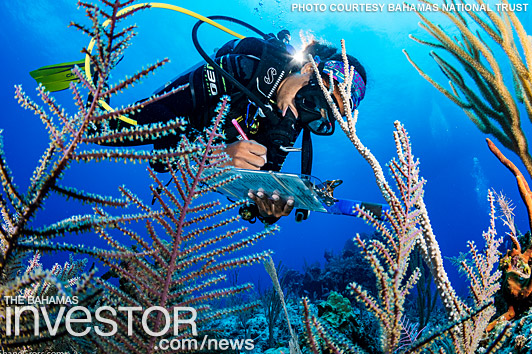| Source: Date: Updated: |
TheBahamasInvestor.com
Friday, August 25, 2017 Friday, August 25, 2017 |
A team of scientists recently completed the Bahamas National Trust’s (BNT) annual survey of the Exuma Cays Land and Sea Park.
The team assessed the health and biodiversity of reefs, mangroves and seagrass beds at 10 sites within the park and two outside. Most of the sites have been monitored periodically for 15 years.
Led by the BNT’s resident scientist, Dr Craig Dahlgren of the Perry Institute for Marine Science, the monitoring programme was funded by the Global Environment Facility, a partnership of United Nations agencies, multilateral development banks, and non-governmental groups.
The overall goal of the Exuma project is to develop better management and sustainable funding of marine reserves like the Exuma park, while training BNT staff in scientific methods.
“Ecological monitoring is essential for the adaptive management of protected areas,” Dr Dahlgren said. “This allows managers to make decisions using the best available information, as new threats and issues emerge.
Other members of the team included BNT Science Officers Lindy Knowles and Agnessa Lundy, Brook Gintert of the University of Miami, Allanah Vellacott of the Perry Institute for Marine Science, Shane Gross and Tanya Kamerman of Nova Southeastern University.
“It is worth pointing out that fish populations in the Exuma park are healthier than elsewhere,” said Lindy Knowles. “They are found in more numbers and in larger sizes – especially key predators like groupers and snappers – than in nearly all the areas we survey.“
The annual monitoring is designed to assess threats to key habitats within park, identify critical resource thresholds, and measure the impacts of climate change on the natural environment.











